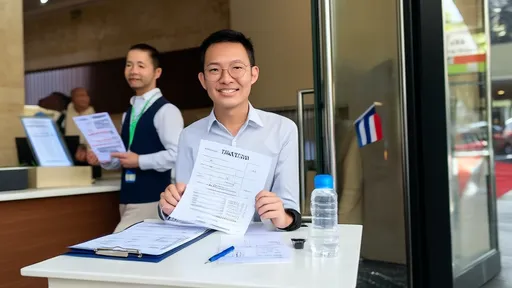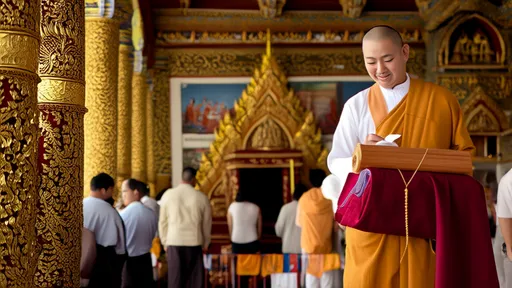In the vibrant tapestry of Indian culture, few customs carry as much weight as the unspoken rule against using one's left hand during meals. This deeply ingrained tradition stems from ancient hygienic practices and spiritual beliefs that continue to shape dining etiquette across the subcontinent. While Western visitors might initially find this restriction puzzling, understanding its cultural significance transforms what seems like a mere table manner into a window into India's soul.
The left hand's taboo status originates from practical sanitation concerns in an era before modern plumbing. Historically, water was scarce in many regions, and people relied on their left hand for personal hygiene after using the toilet. This association made the left hand ritually impure, creating a cultural aversion that persists even in contemporary urban settings where sanitation has improved dramatically. The right hand, by contrast, became sanctified as the "clean" hand for all sacred and social interactions.
Mealtime in India becomes a delicate ballet of right-handed precision. Observing locals reveals how they effortlessly tear flatbreads, scoop curries, and mix rice with dal using only their right fingertips. The technique involves curling the fingers to form a gentle scoop, using the thumb to push food toward the mouth. This method allows for precise control over portion sizes and prevents messy spills - crucial when eating from shared plates. Foreigners attempting this might initially struggle with saucy dishes, but persistence yields satisfying mastery of this edible art form.
Regional variations add fascinating complexity to this dining protocol. In South India, where rice forms the dietary staple, the right hand becomes an efficient mixing tool, blending flavors before forming compact bites. Northern wheat-based cuisines demand different techniques for handling chapatis - using the right hand to tear off pieces while simultaneously dipping them in accompaniments. Coastal communities have developed specialized fish-eating methods that deftly separate bones from flesh using just one hand. These geographical nuances showcase India's culinary diversity within a unifying cultural framework.
Breaking the left-hand rule carries social consequences ranging from mild disapproval to outright offense, depending on context. In conservative households, elders might quietly correct a transgressor, while at formal events, such a faux pas could mark the offender as culturally insensitive. Business meals become particularly fraught, as dining etiquette often serves as an unspoken test of respect and adaptability. Many successful foreign negotiators attribute part of their professional rapport to having mastered this elemental aspect of Indian hospitality.
Modern India presents intriguing exceptions to this ancient custom. The growing popularity of Western utensils in urban cafes creates hybrid dining scenarios. Some progressive families now tolerate left-handed members using their dominant hand, though usually with implements rather than bare hands. Yet even in these evolving contexts, the underlying principle persists - the left hand never directly touches shared food items, maintaining the spirit of the tradition while accommodating contemporary realities.
For travelers seeking authentic culinary experiences, embracing this custom opens doors to deeper cultural connections. Street food vendors visibly relax when foreigners demonstrate this basic respect, often rewarding them with extra portions or secret menu items. Homestay hosts consider proper hand usage as a sign of guests having "Indian hearts," frequently leading to more intimate family interactions. This simple act of cultural competence frequently becomes the unexpected highlight of many visitors' journeys.
The psychology behind this tradition reveals much about Indian values. More than just hygiene, the practice embodies concepts of purity, community, and mindfulness. Eating with one hand demands slower, more deliberate consumption - a stark contrast to multitasking Western meals. The required presence of mind creates natural pauses for conversation and appreciation of flavors, transforming nourishment into a meditative act. In a nation where food is considered sacred, these mealtime rituals become a form of worship.
Mastering Indian dining etiquette requires patience and humility. Seasoned travelers recommend starting with dry foods like poppadums before attempting saucy dishes. Observing local companions provides invaluable clues about pressure points - how firmly to grip a roti or how deeply to plunge fingers into a communal bowl. Most Indians appreciate sincere efforts from foreigners and will generously guide them through the nuances. The occasional spill or fumbled bite often becomes a source of warm laughter rather than embarrassment.
As globalization reshapes cultural boundaries, India's left-hand dining taboo remains a resilient marker of identity. While younger generations adapt certain Western habits, most maintain this fundamental practice as a proud link to their heritage. For visitors, respecting this tradition isn't about perfect execution but demonstrating willingness to engage with India on its own terms. In the subtle language of hands and food, one discovers the profound Indian belief that how we eat reflects who we are.

By /Jul 25, 2025

By /Jul 25, 2025

By /Jul 25, 2025

By /Jul 25, 2025

By /Jul 25, 2025

By /Jul 25, 2025

By /Jul 25, 2025

By /Jul 25, 2025

By /Jul 25, 2025

By /Jul 25, 2025

By /Jul 25, 2025

By /Jul 25, 2025

By /Jul 25, 2025

By /Jul 25, 2025

By /Jul 25, 2025

By /Jul 25, 2025

By /Jul 25, 2025

By /Jul 25, 2025

By /Jul 25, 2025

By /Jul 25, 2025